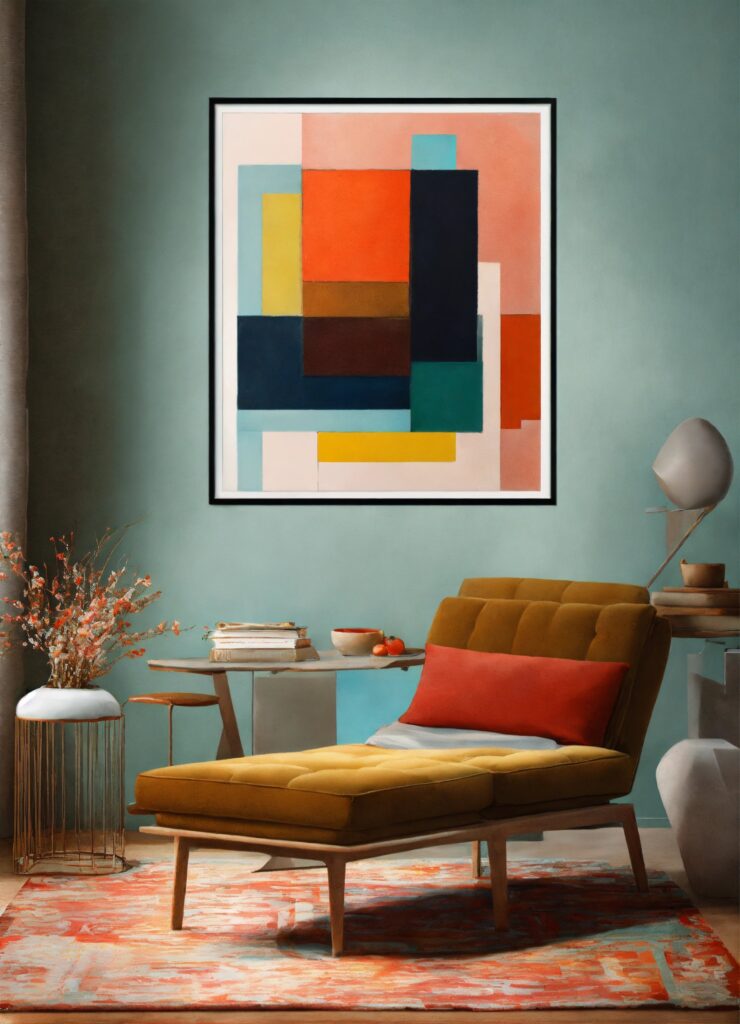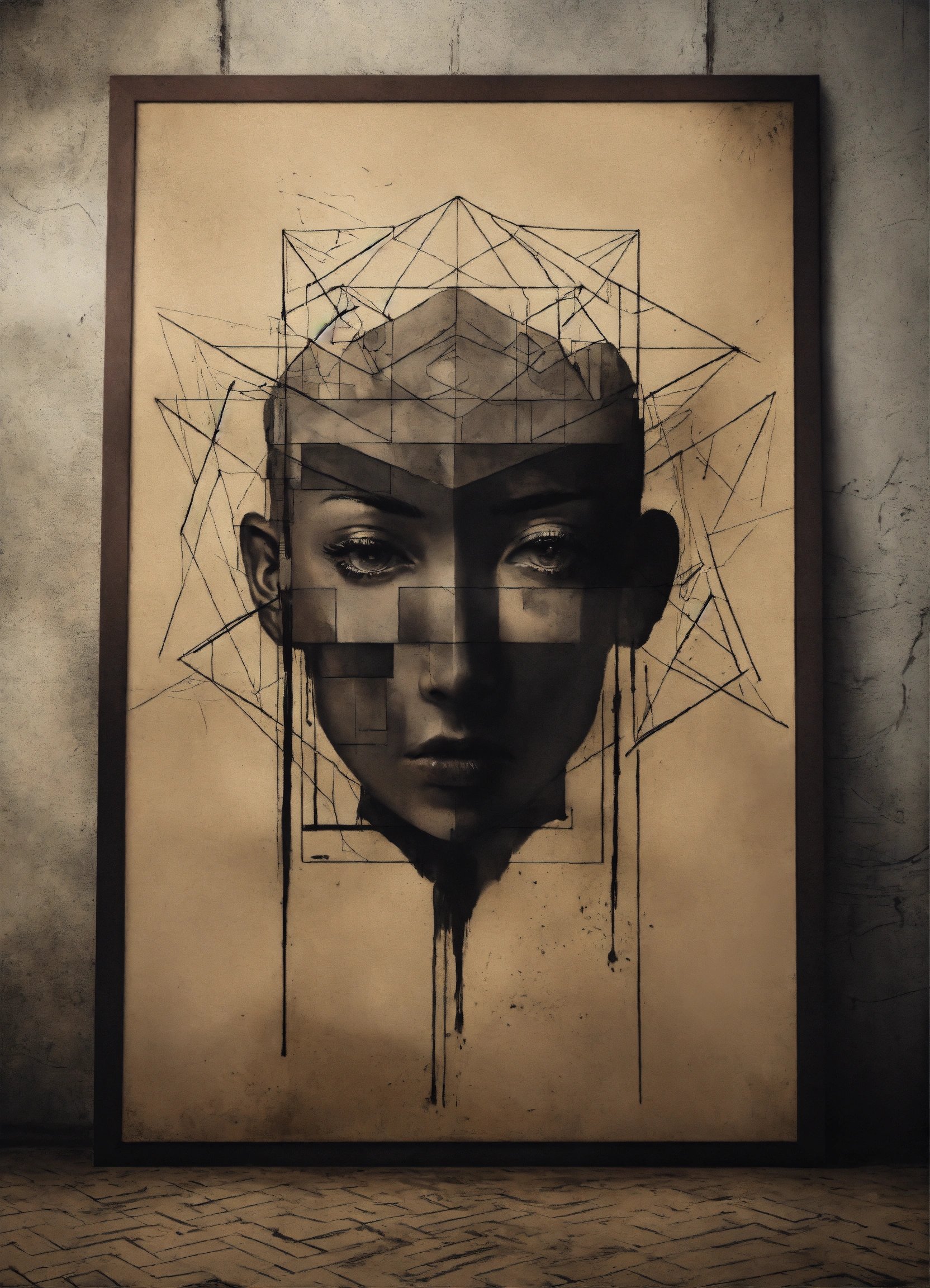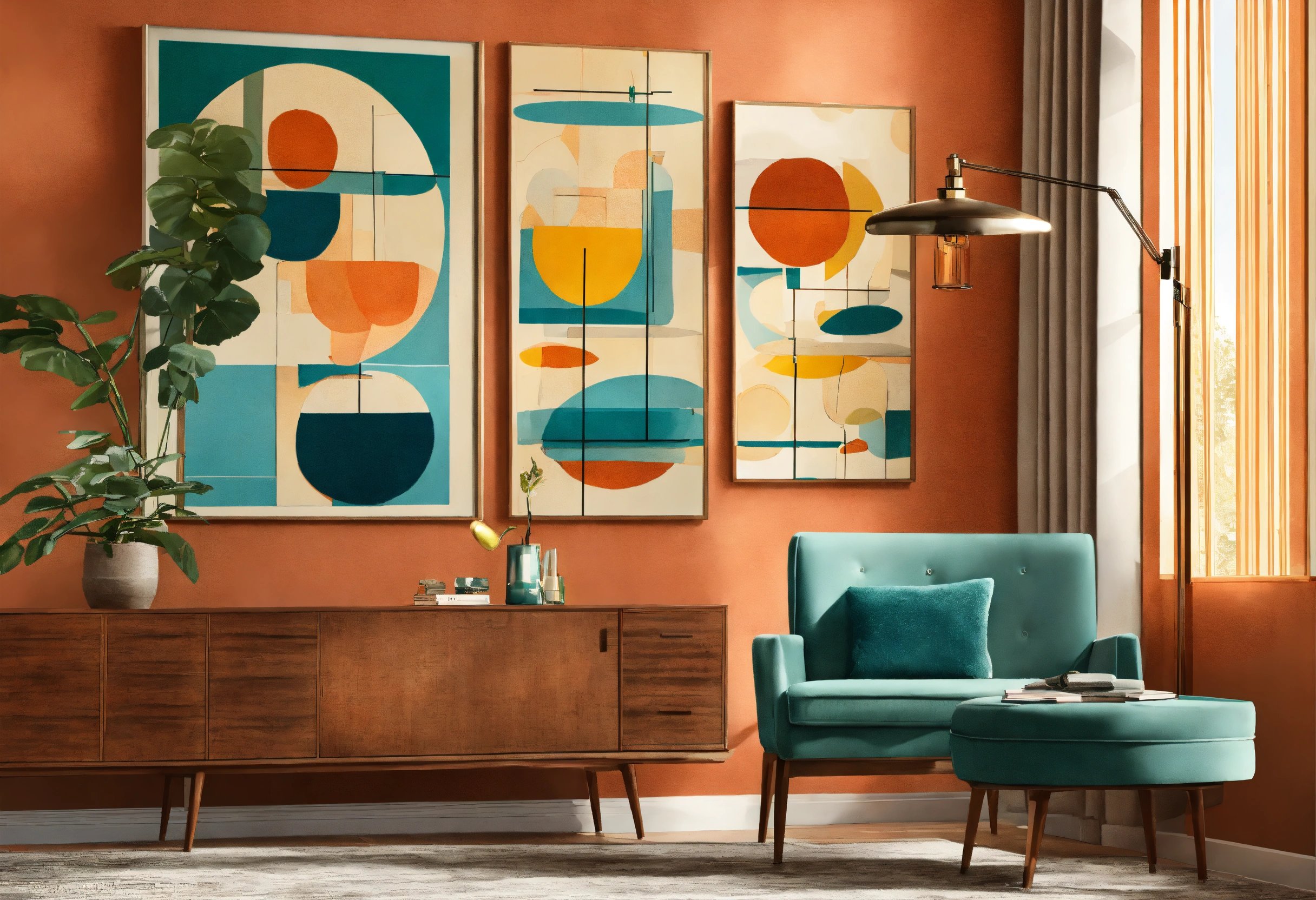Wall art for living rooms is well known for its ability to enhance interior design, adding an artistic touch to your space. Buying a piece of wall art for a living room will have several benefits and impacts that exceed the optical side and affect psychological well-being. When truly understanding the meaning of every living room wall art component, including colors, styles, and subjects, you will be able to choose your living room wall art based on a psychological side which makes you able to control your living room mood and ambiance.
In this article, We’re diving into how wall decor can shift the vibe in our lounges. Let’s see how strategically selected artwork can boost the joy in our daily lives.
Table of Contents
The Role of Color in Wall Art For Living Room
Color can directly affect the living room’s mood, with color psychology impacting how we feel. By understanding this, homeowners can pick living room wall art that matches the mood they want. Warm and cool colors each have their own effect, making a living room anywhere from lively and energetic to quiet and soothing. Picking the right color mix in wall art is essential for setting the room’s feel.
Colors like beige and taupe are classic and elegant, letting the art blend into the background. Bold art can bring life to the living room, while softer color pieces promote relaxation. Either a peaceful haven or a fun hangout spot, thoughtful color choices help shape the room to reflect personal style and mood. Here are some colors commonly used for wall art and their psychological effect.
Psychological Effects of Colors in Wall Art
| Color | Psychological Effect | Ideal Ambience for Living Room |
|---|---|---|
| Red | Energy, excitement, passion | Creates a vibrant, lively, and stimulating environment |
| Orange | Warmth, enthusiasm, creativity | Adds warmth and fosters social interaction |
| Yellow | Optimism, happiness, cheerfulness | Enhances brightness, promoting positivity and friendliness |
| Blue | Calmness, relaxation, serenity | Creates a tranquil, peaceful atmosphere for unwinding |
| Green | Balance, renewal, nature | Promotes a sense of harmony and refreshment |
| Gray | Neutrality, sophistication, calm | Provides a neutral backdrop, enhancing minimalistic designs |
| Purple | Luxury, creativity, mystery | Adds a sense of luxury and artistic flair |
| Beige & Taupe | Comfort, simplicity, elegance | Contributes to a sophisticated and balanced ambience |
The Influence of Subject Matter
Wall art matters a lot in setting the feel of any living room. You could choose from several themes like landscapes, abstracts, or people. Each stirs different emotions and thoughts. For example, art with plants or fields often brings calm. It gives you the feeling of being close to nature and makes a relaxed ambiance. Abstract art, with its random shapes and bright colors, can make a room feel lively and artistic. People in art can tap into deep feelings. They focus on human feelings and stories and can make a room feel meaningful.
The theme matters more than just how it looks, as it can set off memories or feelings that make the art feel special. The story behind the art is as vital as its beauty to many. So, pick art that rings true to your experiences or goals. Maybe it’s a piece that reminds you of a special time or one that shows who you are. Having a link to the artwork gives it the magic to turn a simple room into a place filled with richness and warmth.
The Impact of living room wall art Placement and Arrangement

Putting art on your living room walls can change how the room looks and feels. It’s important to hang the art right. Art is usually put close to eye level, about 57 to 60 inches from the floor. This makes it easy to look at without feeling weird. When you hang art above something like a couch or table, it should be about two-thirds the size of the furniture. Smaller art pieces can be grouped together. This makes a big point of interest and lets you change things up while keeping the look together.
The layout of the art affects how the room feels. Layouts with evenly spaced art give a feeling of order and calm. This suits rooms that are formal or old-fashioned. Layouts that aren’t even, with different sizes and shapes, give a feeling of excitement and creativity. This is great for rooms that are casual or modern. The right art placement can also draw attention to key parts of the room. For example, art around a fireplace can show off the room’s design.
Studies show that art can really change a room. Bold, abstract art brings depth to simple spaces. A wall of personal photos or unique art can add warmth and personality to a room. How you place and arrange art on the wall can change the look and feel of a living room, enhancing both style and atmosphere.
Conclusion
Wall art can change a room’s feel. Picking the right colors can spark certain feelings. Art that has personal meaning and its placement can make a room better. It can also improve the mood of those in the room. You could want a quiet, peaceful place or a vibrant, energetic area. The right art can make your living room show your personality and feelings. It can make it look better and feel more comfortable.
FAQ
How can I choose wall art that fits my existing decor style?
Picking wall art that fits your current decor style is as simple as knowing your room. Look at your color palette, furniture styles, and overall theme. Say you have a minimalist room. You’d want art with basic lines and plain colors. On the other hand, rooms with traditional furniture work better with classic, detailed pieces that match the existing decor style. It’s important to match the size of your wall art to your room. Bigger pieces stand out on large walls, and smaller ones or groups of small ones add to smaller spaces. Choosing art that shows off your personality and sets the room’s vibe ensures that your room feels just right and reflects you.
What are the psychological effects of changing or updating wall art regularly?
Switching up wall art for the living room often livens up any room. It not only makes the area feel fresh but also keeps things exciting. It sparks the creative mind and allows your personality to shine through any changes in preference or mood. Understanding the feelings and memories that new art brings can improve your emotional health. Plus, the pleasure of creating your own unique space is rewarding. In general, swapping out artwork ensures your space is always dynamic and authentically you.




